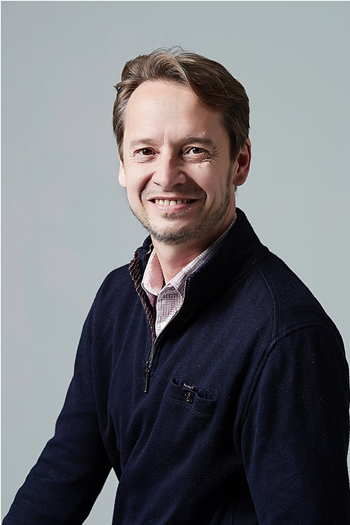Director of the IBS Center for Quantum Nanoscience

Director of the IBS Center for quantum Nanoscience
The first time I met my wife, I had just arrived as an exchange student from Germany at her university, UC San Diego. She asked what I studied, and when I replied her face took a slightly repulsed expression. As a physics major I had seen that look before and many times since. This response tells me that people had experienced science as remote, difficult, or even repellant.
Physics is simply how we describe the way that the universe works, along with our world in it. The mystery and breathtaking beauty is described through the language of mathematics. This can certainly be challenging, but it shouldn’t be remote.
My journey with physics started as a little boy sitting on the kitchen floor. My mother is a great baker and every afternoon our kitchen was always filled with the delicious scents of her homemade cakes and brewing coffee. One day my curiosity overwhelmed me. I had to figure out how her hand mixer worked! Somehow already understanding that the best way to understand a puzzle is to break it down into its component parts, I dismantled the mixer right there on the kitchen floor. In fact I spent much of my childhood meticulously taking things apart to understand how they worked. To my mother’s disappointment, I was not yet skilled in putting them back together. In fact when I built the world’s first extremely low temperature scanning tunneling microscope, I had trouble convincing her that I was capable of making things work!
This is the path to loving science, hands on curiosity and patience for the learning process. When I was a researcher at IBM in Silicon Valley, we created the world’s smallest video. This was a stop motion animation using individual atoms to tell a simple story of a boy and an atom playing and dancing together. It’s really geeky, but it caught people’s imagination. The animation currently has over 11 million views, but more importantly the ‘making of’ video that delved into the science of atomic storage has over 1.5 million views. As part of sharing the science, IBM sent me to their pavilion at Disneyworld and I presented to visitors at the park along with my daughter who was in 4th grade at the time. These presentations were broadcast as webinars to 4th grade classrooms all over the United States as a way to spark excitement about science in children. It was really fun for all of us.
Four years ago, I left IBM to join Ewha as director of the IBS Center for Quantum Nanoscience (QNS) here. As part of our center’s outreach we’ve worked with middle school teachers to develop a handson curriculum exploring nanoscience. We’re hoping it will be used throughout Korea as an engaging way to ignite the love of science in children.
Last year, QNS hosted an art contest for artists to explore the World of Quantum. One of our students, Jinkyung Kim, wrote a great article and held a seminar attended by over 70 artists making the connection between quantum science and art. Over 400 pieces were submitted and our panel of Korean and international judges were really impressed with the clear understanding and innovative expressions of physics done by the artists. In the fantastic building that Ewha built to house our world-leading instruments, we built a show and tell area complete with hands-on exhibits for children and adults to explore our science with hands-on play.
At the Seoul Forum I was asked why I care so much about getting people excited about science, and my answer is simple – its important. When science is engaging and people learn to love it and understand that science is woven into the fabric of their lives, societies make better decisions. Just look at the Korean response to Corona as an example. Korea values scientific understanding and takes a measured, rational approach that, for the most part, people understand and implement. When you compare that with other countries that undervalue and have poor public understanding of science, well the numbers speak for themselves.
Like so many others, my once skeptical wife has learned to love science and shares my passion for research. In fact this probably made it possible for our family to move to Korea, IBS, and Ewha - for the love of science.

